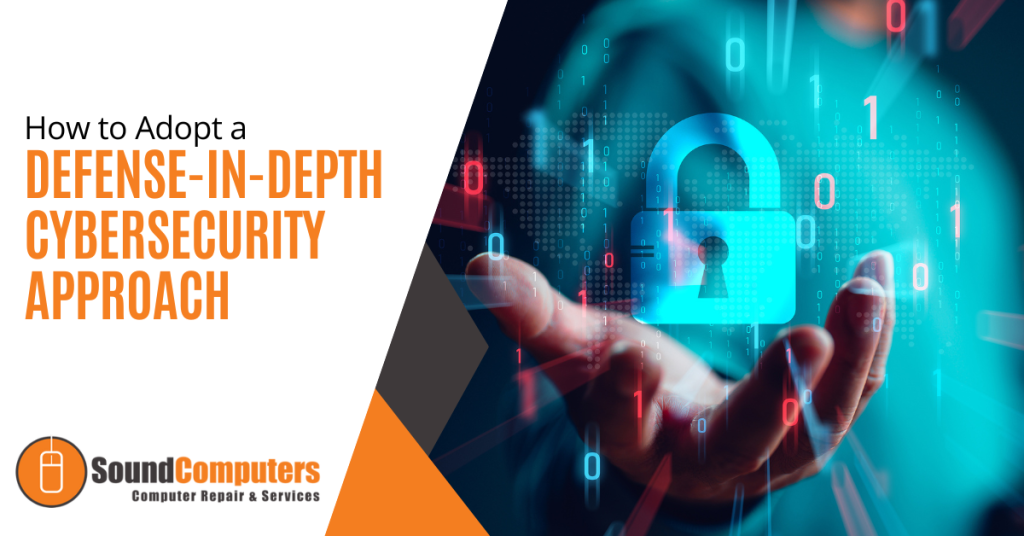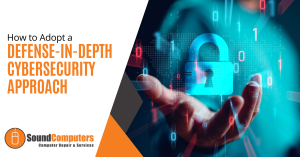
Modern businesses of all sizes are at risk of cyber attacks that can result in data breaches, financial losses and reputational damage. To protect against these threats, it is essential to adopt a defense-in-depth cybersecurity approach. This strategy involves implementing multiple layers of security measures to create a robust defense system that can withstand various types of attacks.
In this article, we will discuss what a defense-in-depth approach entails and provide practical steps for implementing it.
What is a Defense-in-Depth Approach?
A defense-in-depth approach is a cybersecurity strategy that involves using multiple layers of security measures to protect against various types of attacks. The idea behind this approach is to create a robust defense system that can withstand attacks from different angles. If one layer of security is breached, there are several others in place to prevent further damage.
The concept of defense-in-depth is not new and has been used in military tactics for centuries. The idea is to have multiple layers of protection in place to prevent an enemy from gaining access to a critical location. A defense-in-depth approach to cybersecurity is similar because it involves creating layers of security that an attacker must navigate to access sensitive information or systems.
Implementing a Defense-in-Depth Approach
Implementing a defense-in-depth approach requires a comprehensive understanding of the different layers of security measures that can be put in place. We will discuss some of the key areas to focus on when implementing this approach.
Network Security
Network security is the first line of defense in a defense-in-depth approach. It involves protecting the network infrastructure from unauthorized access and malicious attacks. Network security measures include firewalls, intrusion prevention systems and virtual private networks (VPNs).
Firewalls are a critical component of network security. They act as a barrier between the internet and the organization’s internal network and filter out potentially harmful traffic. Intrusion prevention systems (IPS) are another layer of protection that can be used to detect and prevent attacks. They monitor network traffic for signs of suspicious activity and can block traffic that is deemed malicious.
VPNs provide a secure way for employees to access the organization’s network remotely. By encrypting all traffic between the employee’s device and the network, VPNs protect against eavesdropping and man-in-the-middle attacks.
Endpoint Security
Endpoint security involves protecting individual devices such as laptops, desktops and mobile phones. This layer of security is essential because attackers often target individual devices to gain access to the network. Endpoint security measures include antivirus software, patch management and device encryption.
Antivirus software is a critical component of endpoint security. It can detect and remove malicious software from devices and prevent future infections. Patch management is another essential aspect of endpoint security. Regularly updating devices with the latest security patches can prevent vulnerabilities from being exploited.
Device encryption is also crucial for endpoint security. It involves encrypting data on the device so that it cannot be accessed without the proper credentials. If a device is lost or stolen, encryption ensures that the data remains protected.
Access Controls
Access controls are another critical layer of security in a defense-in-depth approach. Access controls involve managing user access to systems and data. This layer of security includes measures such as multi-factor authentication, role-based access control and password policies.
Multi-factor authentication (MFA) is a powerful way to secure user access. By requiring users to provide multiple forms of authentication such as a password and a fingerprint scan, MFA can prevent unauthorized access even if a password is compromised.
Role-based access control is another critical component of access controls. It involves assigning permissions to users based on their role in the organization. This ensures that users only have access to the systems and data that they need to perform their job functions.
Password policies are also an essential part of access controls. They help prevent password-related security incidents by requiring users to create strong, unique passwords and change them regularly. Additionally, password policies can include requirements such as minimum length, complexity and expiration intervals.
Data Encryption
Data encryption is another layer of security that can be used in a defense-in-depth approach. Encryption involves converting data into an unreadable format that can only be deciphered with a decryption key. This makes it challenging for attackers to read or steal sensitive data.
Encryption can be used in several ways including encrypting data at rest, in transit and on individual devices. Encrypting data at rest involves encrypting data stored on hard drives or other storage devices.
Encrypting data in transit involves encrypting data as it travels across networks. Encrypting data on individual devices involves encrypting data stored on laptops, mobile phones and other devices.
Best Practices for Adopting a Defense-in-Depth Approach
Here are some best practices for implementing a defense-in-depth approach:
Conduct a Risk Assessment
Before implementing a defense-in-depth approach, it is essential to conduct a risk assessment. A risk assessment involves identifying potential threats, vulnerabilities and the potential impact of a security incident. This information can be used to determine which layers of security measures are needed and prioritize their implementation.
Create a Comprehensive Security Plan
Once the risk assessment is complete, it is essential to create a comprehensive security plan. This plan should outline the different layers of security measures that will be implemented, who is responsible for each layer and how they will be monitored and maintained. A comprehensive security plan can help ensure that all aspects of security are covered and that there are no gaps in coverage.
Train Employees on Security Best Practices
Employees are often the weakest link in an organization’s security. It is essential to train employees on security best practices to ensure that they are aware of potential threats and know how to respond to them. Security training can include topics such as password management, phishing awareness and incident response.
Regularly Test Security Measures
It is essential to regularly test security measures to ensure that they are effective. Regular testing can include activities such as penetration testing, vulnerability scanning and security audits. These activities can help identify weaknesses in the organization’s security and provide opportunities for improvement.
Implement This Strategy Today
Adopting a defense-in-depth approach is essential for organizations of all sizes to protect against cyber threats. By implementing multiple layers of security measures, organizations can create a robust defense system that can withstand attacks from different angles. This approach requires a comprehensive understanding of the different layers of security measures and how they work together to create a secure environment.
When you are ready to step up your cybersecurity infrastructure with defense-in-depth, contact Sound Computers for expert assistance.

